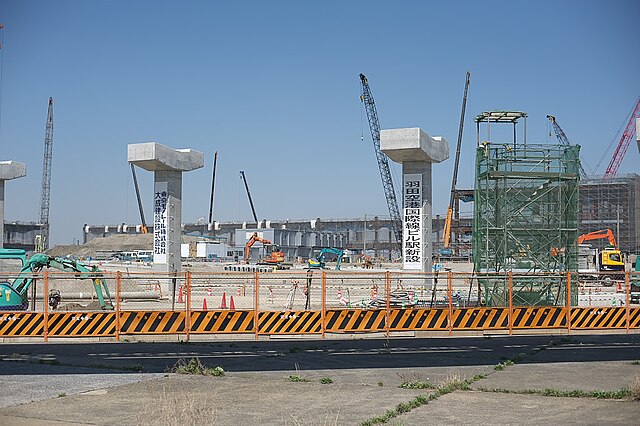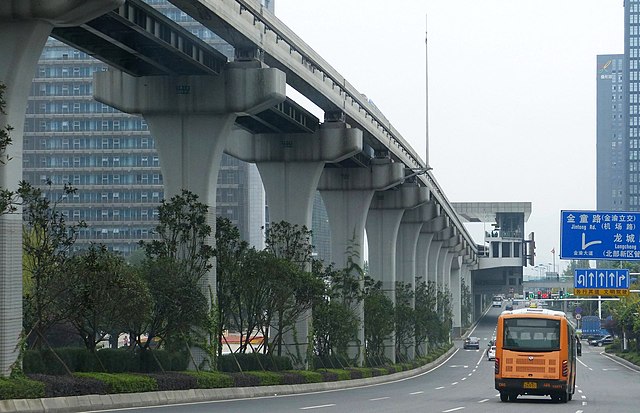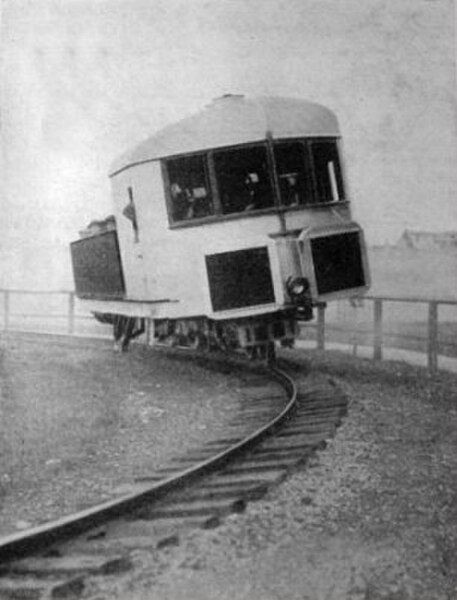The Tokyo Monorail , officially the Tokyo Monorail Haneda Airport Line , is a straddle-beam, Alweg-type monorail line in Tokyo, Japan. It is an airport rail link that connects Tokyo International Airport (Haneda) to Tokyo's Ōta, Shinagawa, and Minato wards. The 17.8-kilometer (11.1 mi) line serves 11 stations between the Monorail Hamamatsuchō and Haneda Airport Terminal 2 stations. It runs on a predominantly elevated north–south route that follows the western coast of Tokyo Bay. The monorail is operated by the Tokyo Monorail Co., Ltd., which is jointly owned by JR East, the system's rolling stock supplier Hitachi, and ANA Holdings, Inc.. It carried an average of 140,173 passengers per day in 2018.
A train passing through Haneda Airport
Haneda Airport in the 1950s
Construction of Haneda Airport Terminal 3 Station, then-named Haneda Airport International Terminal Station, in 2009
1000 series
A monorail is a railway in which the track consists of a single rail or a beam. Colloquially, the term "monorail" is often used to describe any form of elevated rail or people mover. More accurately, the term refers to the style of track. Monorail systems are most frequently implemented in large cities, airports, and theme parks.
Chongqing Rail Transit has the longest and busiest monorail system in the world, with Line 3 being the longest and busiest single monorail line.
São Paulo Metro Line 15, is the longest and busiest monorail line in the Americas, and second worldwide.
Monorail on concrete columns in Chongqing, China
Gyroscopically balanced monorail (1909) by Brennan and Scherl








